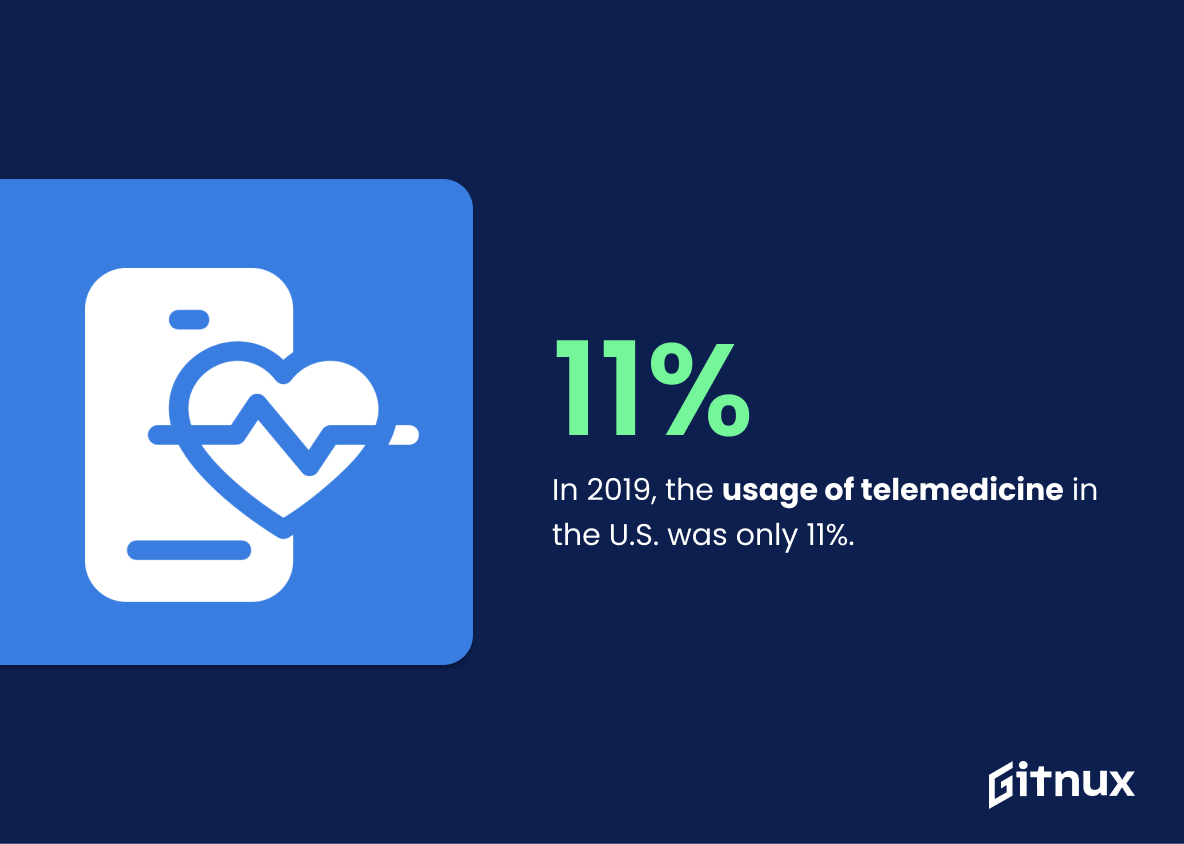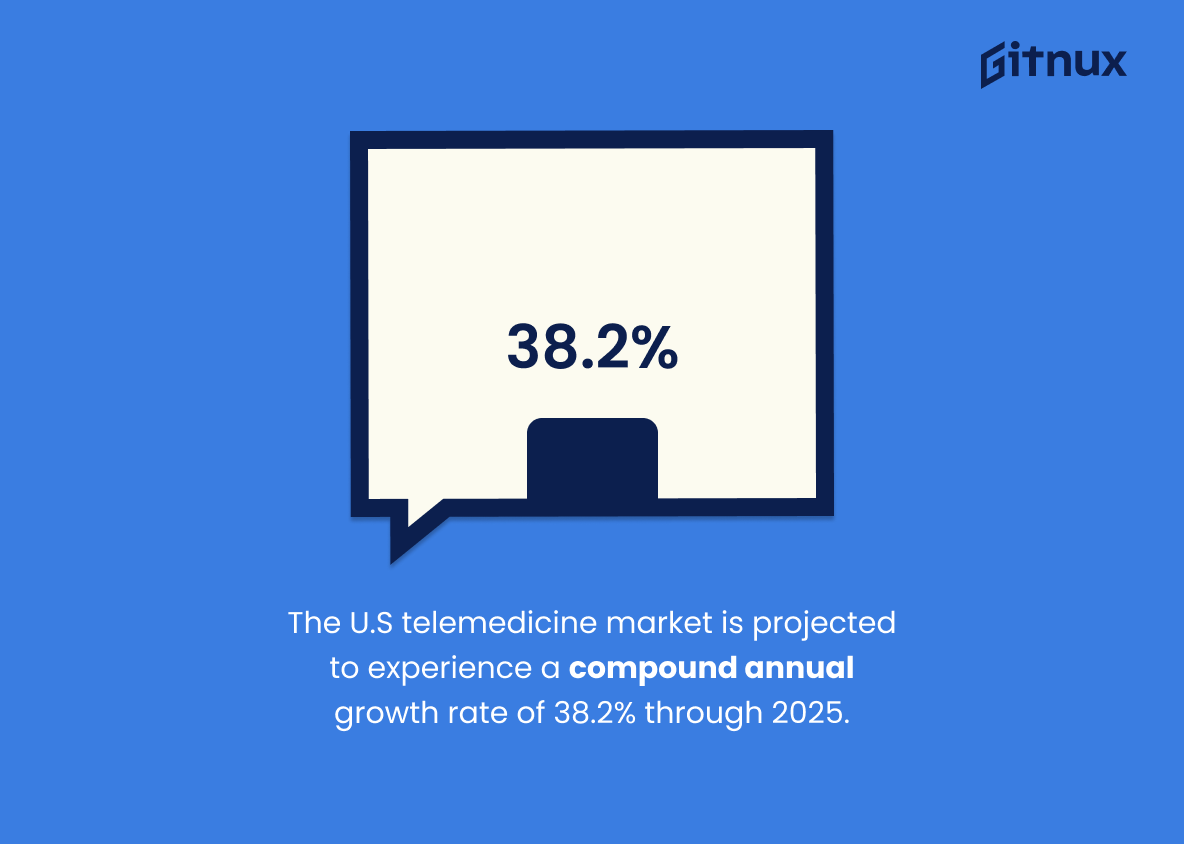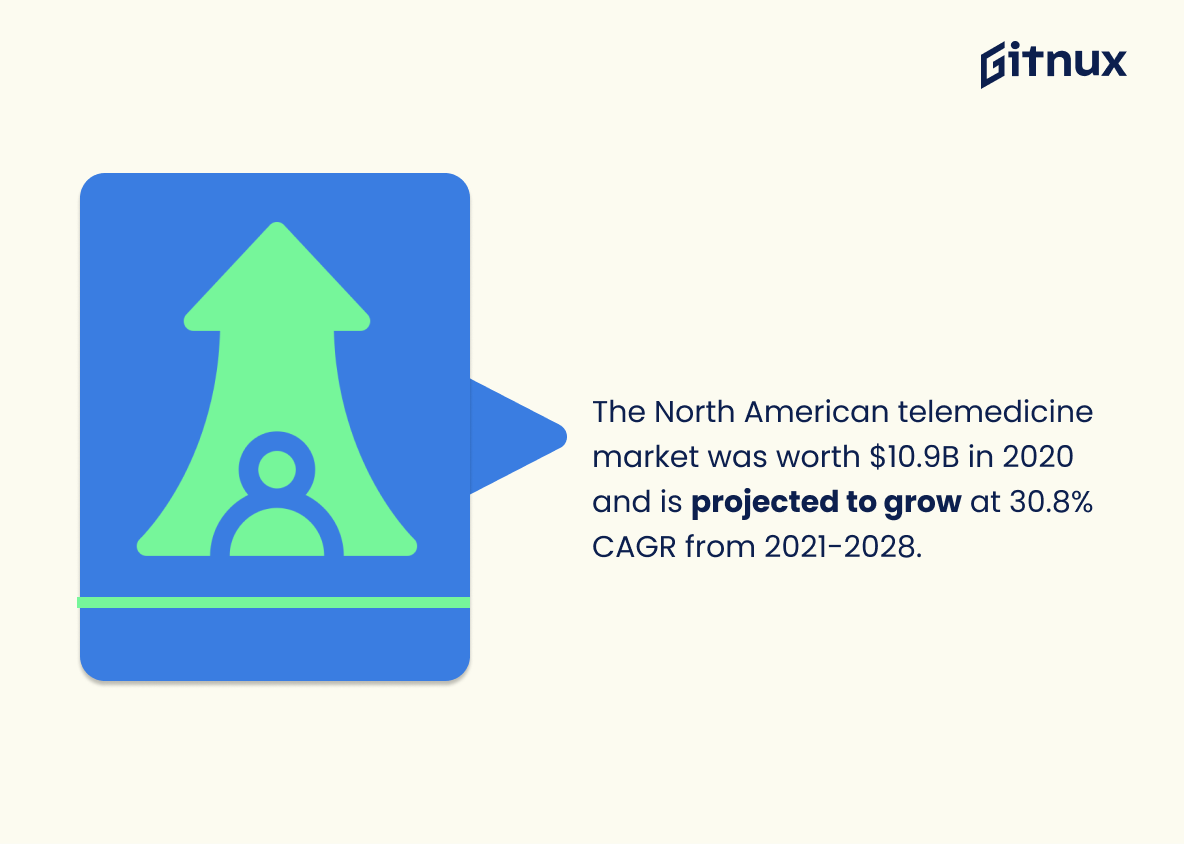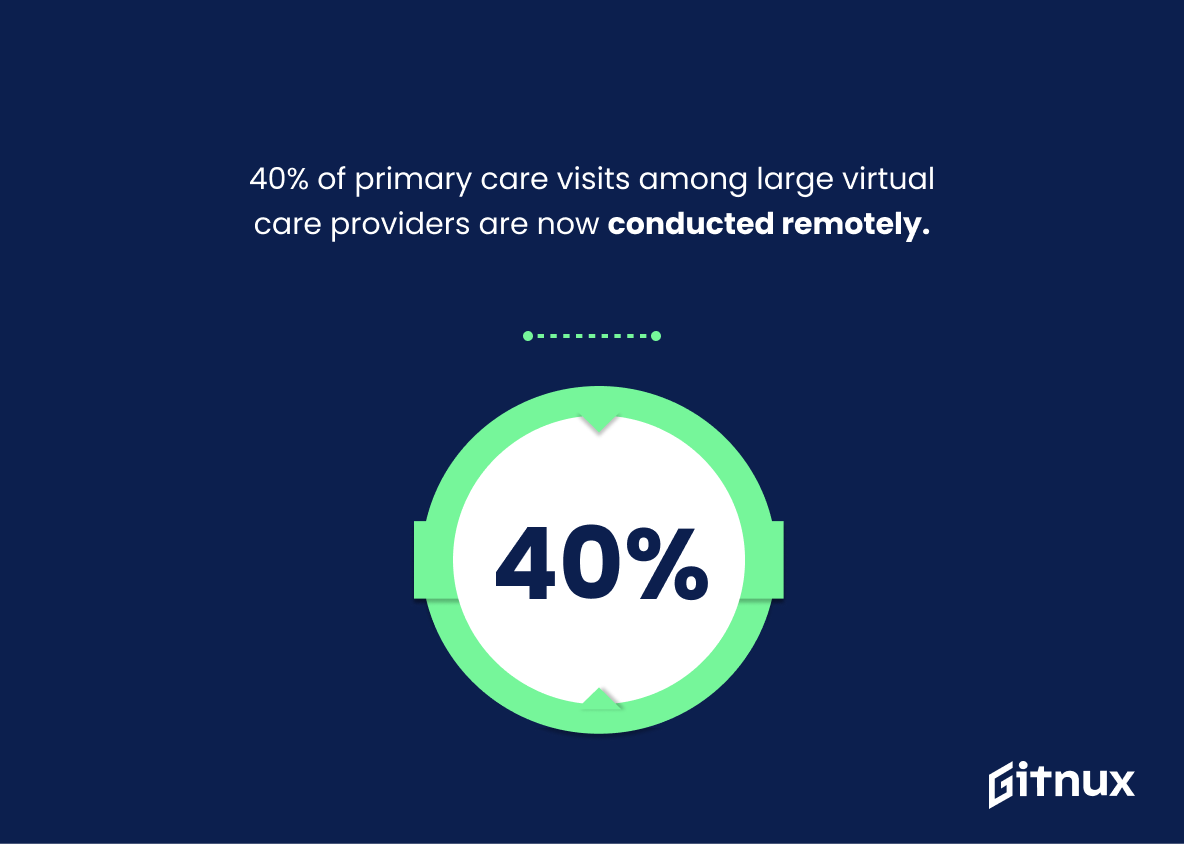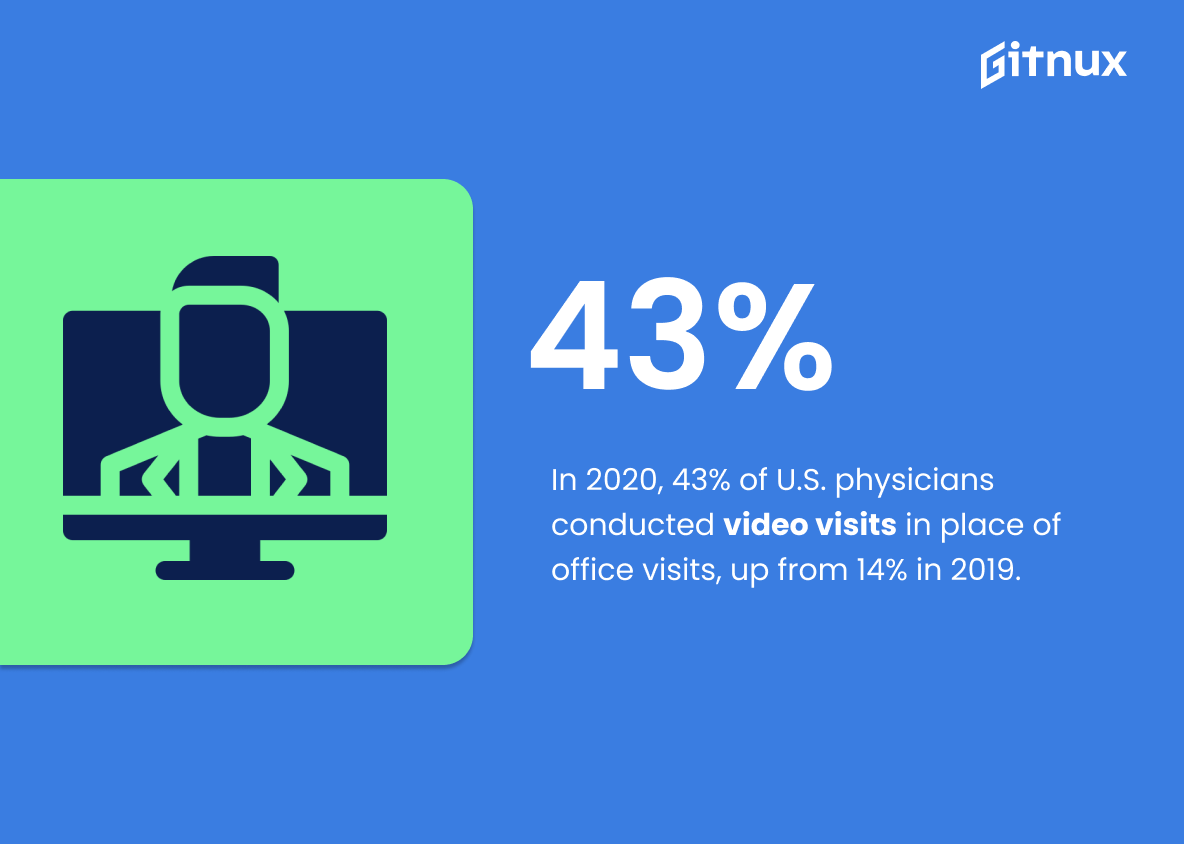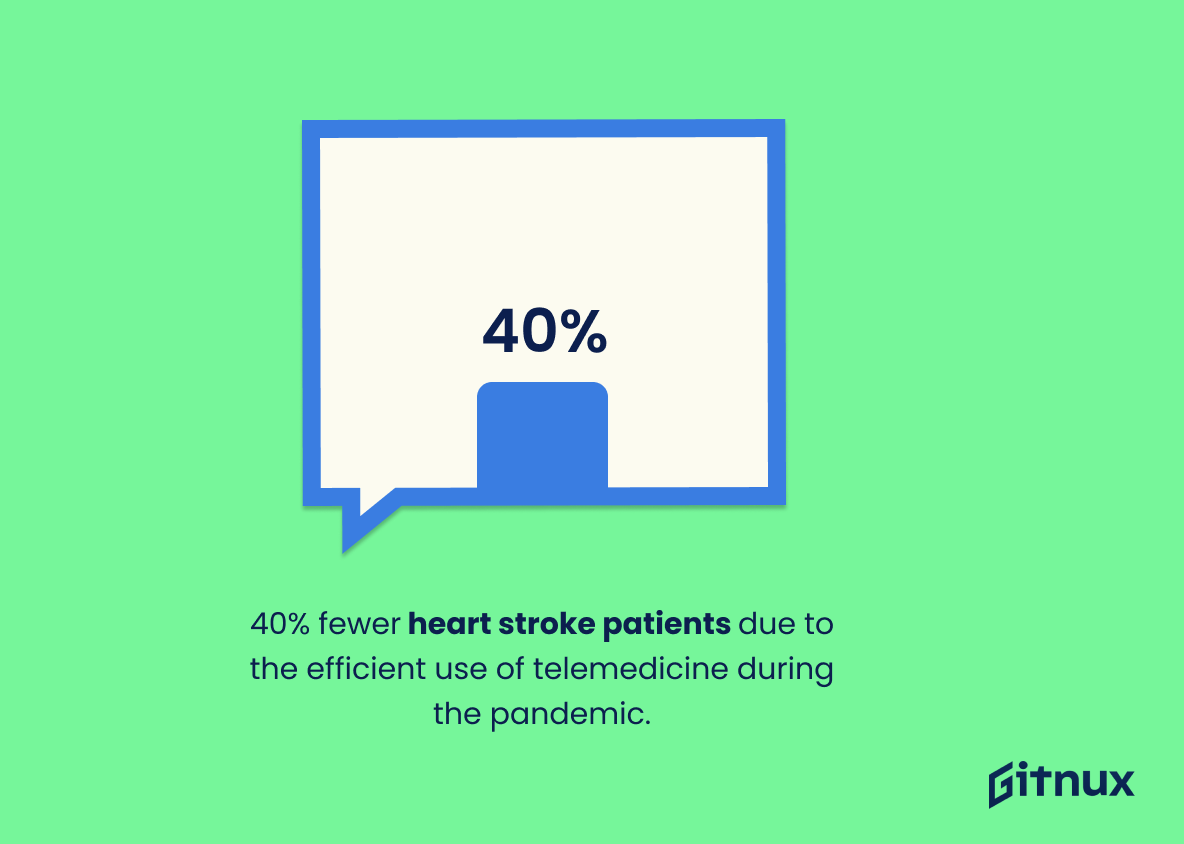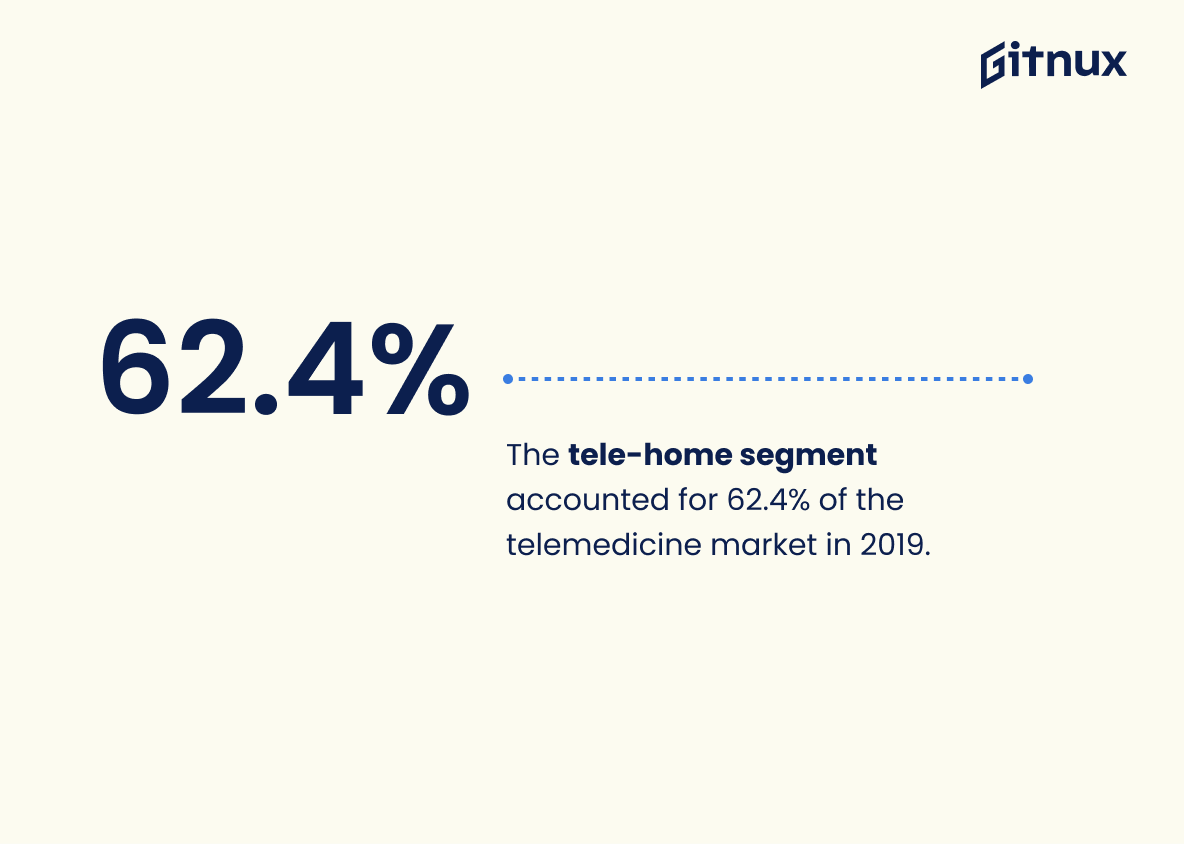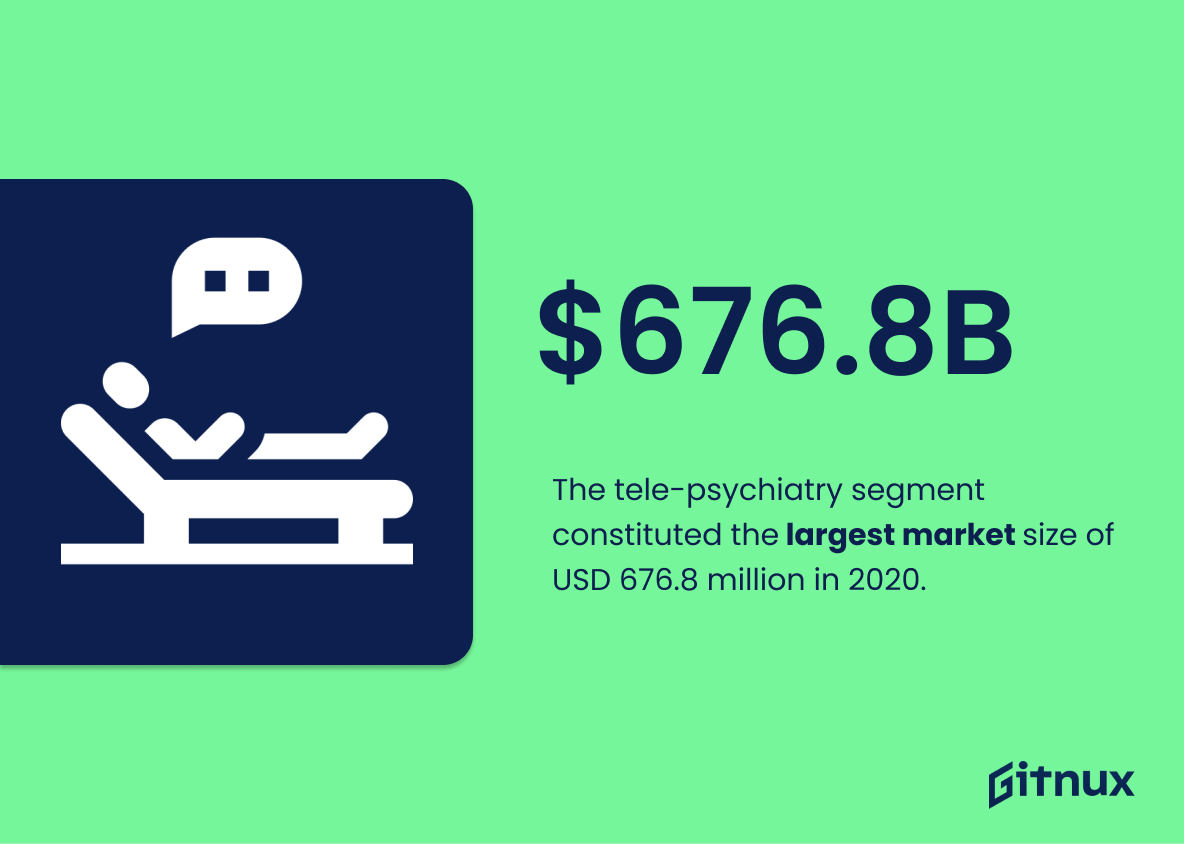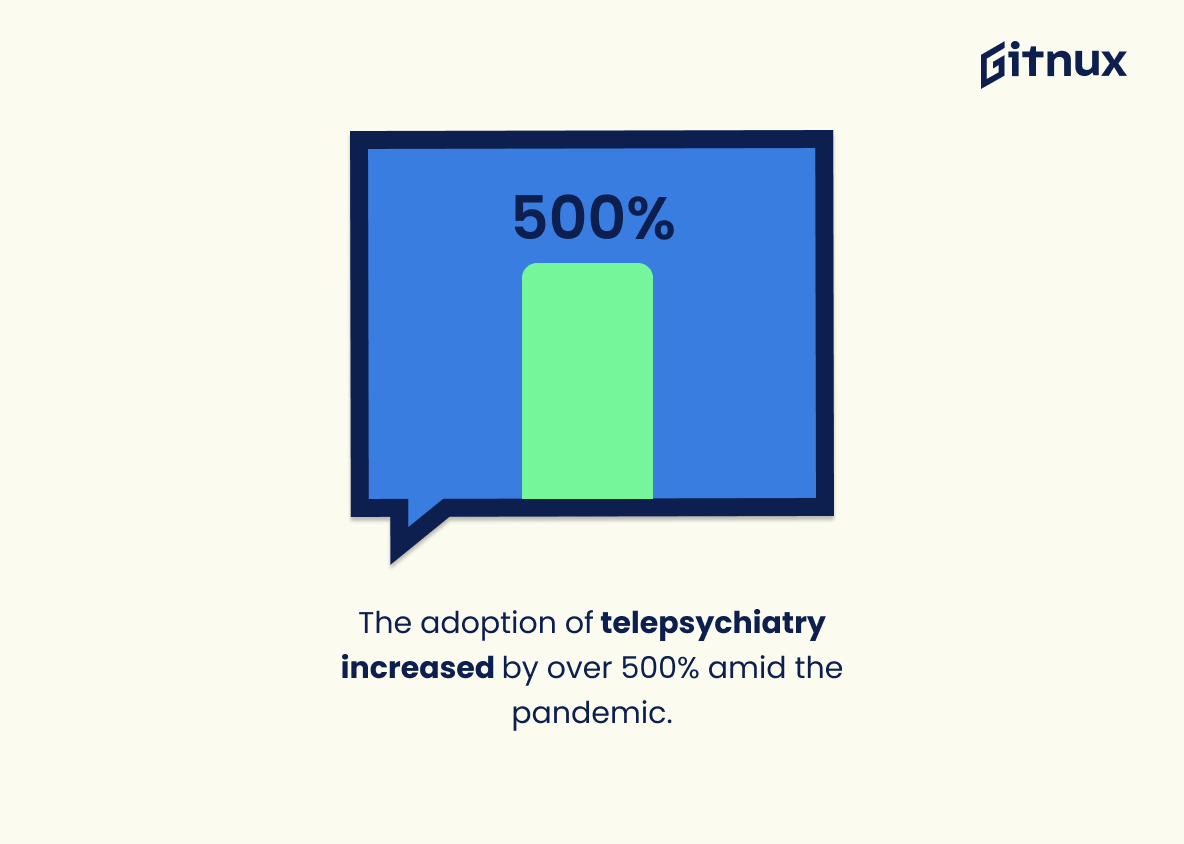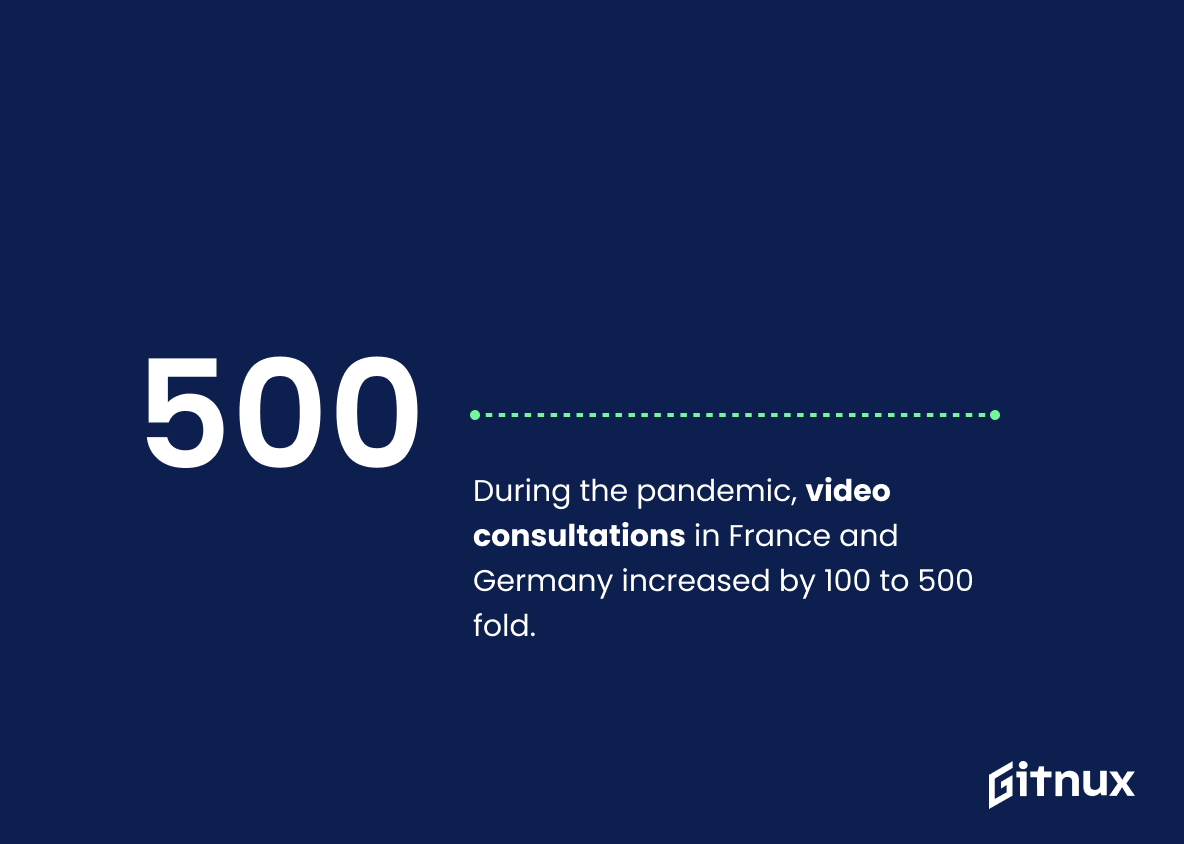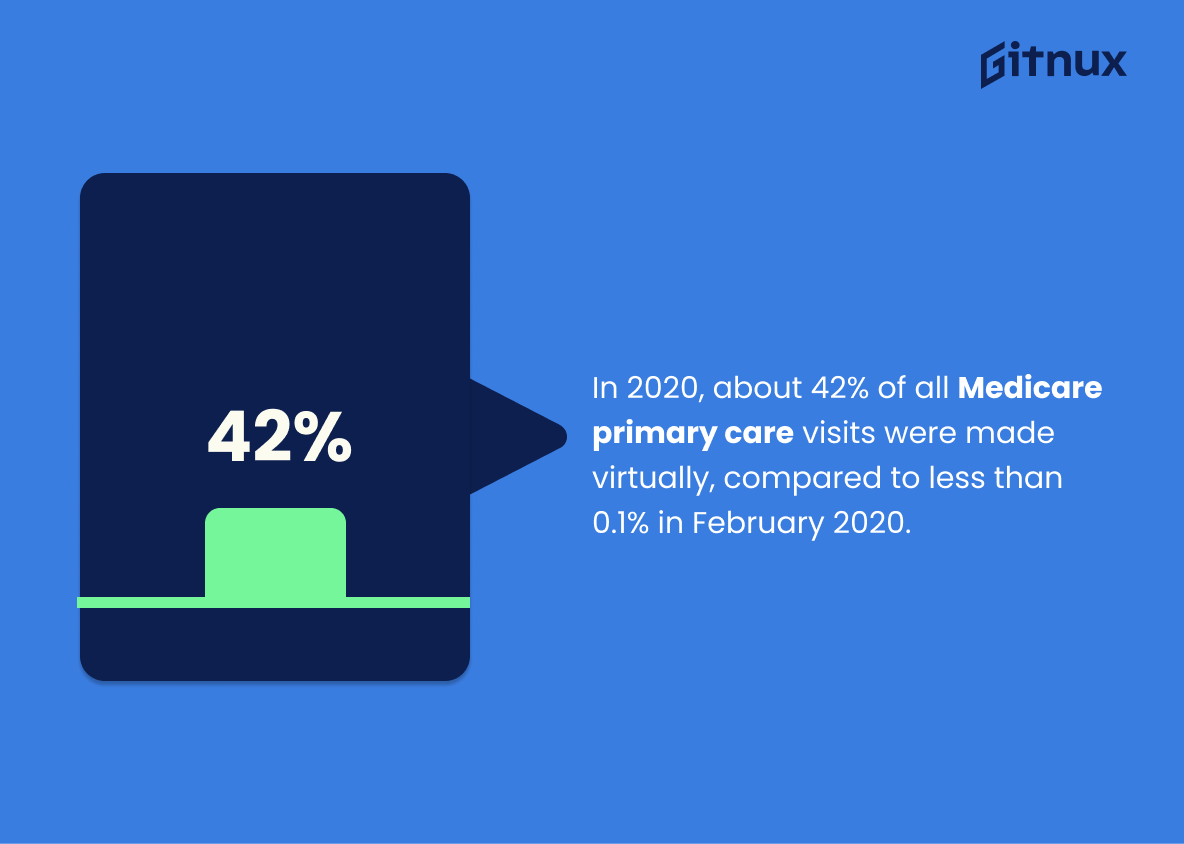In this era of evolving technology and rapid digital transformation, telemedicine has emerged as a driving force reshaping the healthcare landscape. Today, the concept of consulting a healthcare professional from the comfort of your home using a smartphone or computer isn’t just convenient—it’s becoming the norm. As we delve into this exciting digital healthcare revolution, this blog post will shine the spotlight on revealing telemedicine growth statistics. We’ll explore the remarkable rise of telemedicine, offering insights into how and why these shifts are occurring, and what they mean to patients, healthcare providers, and the industry as a whole. Strap in as we journey through the world of telemedicine, backed by enlightening numbers encapsulating its current status and envisaging its future trajectory. Let the data tell the tale of this 21st-century e-health evolution.
The Latest Telemedicine Growth Statistics Unveiled
In 2019, the usage of telemedicine in the U.S. was only 11%.
Undeniably, a transformation in healthcare services has been triggered by the integration of smart technology. The citation of an 11% telemedicine usage in the U.S in 2019 not only lays the groundwork but also underlines the era before this digital healthcare revolution became widespread. This provides a stark contrast, offering an intriguing point of departure to narrate how the telemedicine industry has since surged and evolved. This percentage also evokes curiosity regarding the factors that may have resulted in such a low usage, prompting an exploration into the challenges encountered and how they were triumphantly overcome to spur growth in the later years. Therefore, this seemingly small figure unexpectedly unfolds a larger narrative of continuous progression and resilience within the telemedicine industry.
The U.S telemedicine market is projected to experience a compound annual growth rate (CAGR) of 38.2% through 2025.
Imagine painting a vivid picture of the future of telehealth. The U.S telemedicine market is forecasted to undergo an explosive upward trajectory of 38.2% CAGR through 2025. That’s like climbing a steep hill, quick as a gazelle: relentless, insistent, and definitely significant. In weaving this blog post about Telemedicine Growth Statistics, this projection becomes the cornerstone, your plot twist. It ripples and pulses with promise, showing the immense potential that technology like telemedicine possesses to transform healthcare. It’s the chorale in our telehealth symphony, signaling not only towards great profits and innovations, but also towards an increasingly accessible, efficient, and advanced healthcare delivery for all.
By 2026, the Asia Pacific telemedicine market will grow by more than 25%.
This future projection of the Asia Pacific telemedicine market echoes the invigorating crescendo of technological advancements in healthcare. Manifesting an ambitious 25% growth prediction for 2026, it underscores the immense potential this region holds in revolutionizing healthcare access and delivery. This statistic plays a pivotal character in our narrative about Telemedicine Growth Statistics. Its essence is captured not so subtly – an intriguing sneak peek into the future ubiquity of telemedicine in the Asia Pacific, a region that is all set to harness telecommunication for health services. Such an impressive leap forward coupled with galloping rates of tech adoption could significantly level the playing field, disrupting barriers in healthcare.
The North American telemedicine market size was valued at $10.9 billion in 2020 and is expected to grow at a CAGR of 30.8% during 2021-2028.
Unraveling the lofty figures revealing the North American telemedicine market, a stellar financial juggernaut is uncovered. The immense valuation of $10.9 billion in 2020 alone underscores the significant uptake and embracement of telemedicine services across North America. A vast cosmos of opportunity is also illuminated by the bright beacon of a projected 30.8% CAGR between 2021-2028. This remarkable forecast captures the exponential surge in demand for remote medical assistance and telehealth as the healthcare landscape transforms. From this compelling statistic, one can picture the trail of innovative solutions, technological advancements, and burgeoning patient preferences for convenient healthcare that will steer the market towards these impressive growth heights. Undeniably, this statistic forms the lifeblood of conversations surrounding the burgeoning expansion of the telemedicine universe.
40% of primary care visits among large virtual care providers are now conducted remotely.
“Picture this: The landscape of primary healthcare is rapidly evolving, it’s like we’re glimpsing the future right now. Clinically speaking, this impressive statistic, seeing almost half, 40% to be exact, of primary care visits among large virtual care providers being managed remotely, paints a vibrant image of burgeoning digital healthcare synergies. It emphasizes the trajectory towards telemedicine, highlighting its rising significance. In the vibrant canvas of telemedicine growth, this statistic works like a vibrant brushstroke, making it more colorful and attention-grabbing. It brings to the foreground a healthcare model that we couldn’t fathom before, with patient consultations, diagnosis, and even treatments, transcending physical boundaries, celebrating the convenience of remote handling. Therefore, in a blog post about Telemedicine Growth Statistics, this fact vividly contributes to the greater narrative we are crafting about the exponential development of telemedicine.”
In 2020, 43% of U.S. physicians conducted video visits in place of office visits, up from 14% in 2019.
A fascinating transformation can be traced in the landscape of healthcare delivery through this statistic: ‘In 2020, 43% of U.S. physicians conducted video visits in place of office visits, compared to an earlier 14% in 2019.’ It reflects an evolving trend in telemedicine, signaling an explosive growth trajectory in a short span of time. The considerable shift from onsite to online consultations doesn’t exist in isolation; it underlines the readiness of both doctors and patients to adopt newer, technology-driven methods of healthcare. For readers interested in Telemedicine, this metric serves as a compelling evidence of its mounting acceptance and broadening horizons. It paints a picture of the future where physical distance no longer hinders access to quality healthcare and illustrates the incredible potential of telemedicine in revolutionizing healthcare delivery.
40% fewer heart stroke patients due to the efficient use of telemedicine during the pandemic.
Highlighting a statistic like ‘40% fewer heart stroke patients due to the efficient use of telemedicine during the pandemic’ throws a spotlight on the profound impact telemedicine is making in health care. It illustrates how this new avenue of medicine is not just about convenience, but a potent tool in the fight against life-threatening conditions such as heart stroke. In the face of a global health crisis, this figure marks a promising victory for telemedicine, acting as evidence of its potential in improving health outcomes, revolutionizing healthcare accessibility and providing hope amidst the storm. This dramatically underscores telemedicine’s growth and significance, firmly placing it as a game changer in the world of healthcare.
The tele-home segment accounted for 62.4% of the telemedicine market in 2019.
Highlighting that the tele-home segment formed an impressive 62.4% share of the telemedicine market in 2019, brings out the dominant position of this segment in shaping the landscape of telemedicine. It underpins the growing trend of patients preferring to leverage technology for healthcare consultations within the comforts of their homes. Accommodating this trend within a blog post on Telemedicine Growth Statistics magnifies the potential of home-based telemedicine solutions to emerge as the new norm, thereby aiding readers to understand the future course of this sector.
The tele-specialty services segment in telemedicine is expected to record a CAGR of 18.4% from 2021 to 2028.
Highlighting a projected Compound Annual Growth Rate (CAGR) of 18.4% for the tele-specialty services within the telemedicine field from 2021 to 2028 is a testament to the incredible growth and momentum building up in this sector. It underscores the evolving dynamics in healthcare, reinforcing how telemedicine is not merely a passing trend, but a sector poised for substantial expansion. This figure is a beacon for investors, policymakers, and healthcare stakeholders, demonstrating where the future of healthcare is headed. Furthermore, as the largest anticipated growth segment in telemedicine, tele-specialty services could be the heart of transformative change, setting new standards for critical healthcare delivery across the globe.
The tele-oncology sub-segment in the U.S. tele-specialty services market is expected to witness the fastest growth in the forecast period.
Highlighting the projected rapid expansion of the tele-oncology sub-segment in the U.S. tele-specialty services market provides a glimpse into the future landscape of telemedicine. It emphasizes the growing acceptance and adoption of telemedicine practices, especially in areas as critical as oncology, revealing the industry’s readiness to use telemedicine to deliver complex, life-saving treatments. This insight stimulates discussions on technological innovation, patient convenience, and healthcare accessibility. Therefore, it holds a wealth of importance for investors, healthcare professionals, and policy-makers reading the blog post, shaping their understanding and future decisions about where telemedicine is heading.
The tele-psychiatry segment constituted the largest market size of USD 676.8 million in 2020.
The eye-catching figure of USD 676.8 million in 2020 signifies the undeniable dominance of the tele-psychiatry segment, painting a vivid picture of the telemedicine landscape. It’s like a towering skyscraper in the city of healthcare innovation, casting a long shadow over other segments. This hefty number demonstrates the critical role of tele-psychiatry within the burgeoning telemedicine industry, spotlighting its potential for future investment and growth. Hence, it can be seen as a beacon for investors, innovators, and healthcare professionals alike in the pursuit of improved healthcare accessibility and efficiency.
The adoption of telepsychiatry increased by over 500% amid the pandemic.
In the landscape of telemedicine growth statistics, the over 500% surge in the adoption of telepsychiatry amid the pandemic is a powerful testimony to a seismic shift in healthcare delivery methods. This statistic not only highlights a profound acceleration in terms of reliance on digital healthcare solutions but also underscores the indispensable role of telepsychiatry in maintaining mental health services during unprecedented times. It’s like a beacon, illuminating increased acceptance and trust in remote medical care while indicating the vast growth potential for telemedicine. Undoubtedly, this figure serves as a cornerstone narrative, enabling greater understanding about dynamically changing patient-doctor interactions and showcasing an emerging trend that could redefine the future of healthcare.
During the pandemic, video consultations in France and Germany increased by 100 to 500 fold.
Delving into the explosive growth of telemedicine, the jaw-dropping statistic of video consultations in France and Germany amplifying 100 to 500 times during the pandemic speaks volumes. It underscores how rapidly telemedicine has evolved from a convenient healthcare option to a vital lifeline during these challenging times. This tangible surge exemplifies the momentum telemedicine has gathered, spotlighting its increasing acceptance and probable permanence in a post-pandemic world. This quantum leap also hints at the unseen potential of the digital health industry and its capacity to reshape the future of healthcare.
In 2020, about 42% of all Medicare primary care visits were made virtually, compared to less than 0.1% in February 2020.
Highlighting the dramatic leap from less than 0.1% of all Medicare primary care visits being virtual in February 2020 to approximately 42% becoming virtual by the year’s end, serves as a powerful testament to the sheer pace and magnitude of telemedicine’s expansion. This seismic shift vividly demonstrates the rapid adoption and acceptance of digital health tools, particularly, telemedicine, in the face of the global pandemic. Evidently, this is not merely a trend, but perhaps the start of a new normal in healthcare, underlining the importance of investigating telemedicine growth statistics in order to fully comprehend and strategically navigate this wave of digital transformation in healthcare.
In May 2020, nearly 50% of healthcare consumers in the U.S. were using telehealth to replace cancelled healthcare visits.
Reflecting on the cited fact that nearly 50% of healthcare consumers in the U.S. turned to telehealth in place of their canceled healthcare appointments during May 2020, illuminates a sea change in healthcare delivery. It illustrates the unavoidable pivot towards telemedicine, not as an adjunct, but as a considerable entity within the healthcare sector. This data point is pivotal, painting a vivid picture of a trend which underscores the dynamic growth and increasing acceptance of telemedicine. It nails home the potential this sector holds, as more and more patients adapt to the technology; thus, it’s increasingly crucial for healthcare providers to recognize and adapt to this evolution. This shift isn’t merely a flash in the pan, rather it’s a powerful and undeniable testimony to the extraordinary growth of telemedicine.
Conclusion
The potential and impact of telemedicine are consistently reinforced by its impressive growth statistics. The evolving digital era coupled with necessitated changes like the COVID-19 pandemic have given this sector unprecedented momentum. It’s clear that this isn’t merely a passing trend, but a paradigm shift in the global healthcare industry. The vast benefits such as improved patient care, cost-effectiveness, increased access, and convenience signify that telemedicine’s growth will not slow down any time soon. As we explore further in digital health, it’s imperative for healthcare providers to leverage these opportunities offering telemedicine to meet the rising patient demand. Surely, telemedicine is fast becoming the new norm in healthcare, promising a future where quality healthcare is just a click away.
References
0. – https://www.www.businesswire.com
1. – https://www.healthtechmagazine.net
2. – https://www.www.grandviewresearch.com
3. – https://www.www.healthleadersmedia.com
4. – https://www.www.heart.org
5. – https://www.www.globenewswire.com
6. – https://www.www.medicaleconomics.com
7. – https://www.www.prnewswire.com
8. – https://www.www.managedhealthcareexecutive.com
9. – https://www.www.mckinsey.com
